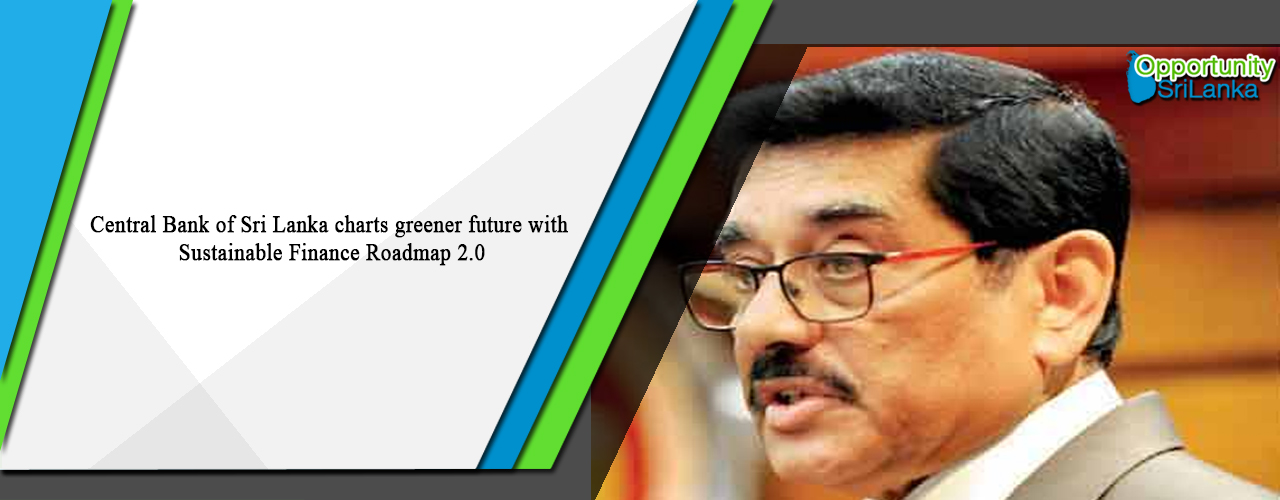Central Bank of Sri Lanka charts greener future with Sustainable Finance Roadmap 2.0
Daily FT: Marking a significant shift in Sri Lanka’s journey towards a greener and more inclusive financial system, the Central Bank yesterday unveiled the Sustainable Finance Roadmap 2.0 for 2025-2029, an ambitious update to its 2019 framework.
This second iteration reflects the financial sector’s strengthened commitment to building economic resilience amid escalating climate risks and social challenges. With a sharper focus on risk-informed decision-making, targeted action planning, and the financial empowerment of vulnerable communities — the Roadmap comes at a time when sustainable finance is becoming an essential pillar for national and global stability.
This latest framework was designed with the technical and financial support from the International Finance Corporation (IFC), in partnership with the European Union, under the Accelerating Climate Smart and Inclusive Infrastructure in South Asia (EU-ACSIIS) programme.
Delivering the keynote address, Central Bank of Sri Lanka (CBSL) Governor Dr. Nandalal Weerasinghe commended the move, labelling it a “critical step in the complete integration and management of Environmental, Social, and Governance (ESG) principles into business operations.”
While ESG is self-regulated in Sri Lanka, many other jurisdictions have passed transformative policies that include mandatory climate disclosure regulations. The new Roadmap, conceptualised by the CBSL in partnership with the IFC, strives to amalgamate global expertise with local insights from key stakeholders, including the Securities and Exchange Commission of Sri Lanka (SEC), the Insurance Regulatory Commission of Sri Lanka (IRCSL), the Colombo Stock Exchange (CSE), the Sri Lanka Banks’ Association (SLBA), The Finance Houses Association of Sri Lanka (FHA), and academia, to champion value chain and climate scenario analysis.
“The Sustainable Financing Roadmap 2.0 ensures identification and precise measurement of ESG principles by close observation of recent trends by leveraging technology and wider stakeholder involvement,” Dr. Weerasinghe said, adding that such risk evaluation is not only crucial to enabling targeted action, but will foster resilience across all regions and sectors alike, driving innovative solutions for a sustainable future.
The CBSL Governor also noted that the updated framework aims to strengthen green financing by diversifying into financial products tailored to address specific needs.
OSL take:
Sri Lanka’s ongoing economic expansion has presented many business/investment opportunities in the country and the country’s commitment to promote a blue and green economy, which would also open more opportunities, is being further consolidated by the Sustainable Finance Roadmap 2.0. The commitment of Sri Lankan authorities to focus on sustainable financing and its incentives have opened a new path for business/investment opportunities. Given Sri Lanka’s growth path supported by the country’s geographical positioning in the Indian Ocean, the strong trade ties enjoyed with many foreign countries, the improving ease of doing business environment in the country and the country being identified as an emerging business destination in the region have all resulted in an overall expansion in the business/investment opportunities in the country. However, the focus on promoting the Sustainable Finance Roadmap 2.0 would further expand the existing business/investment opportunities. Given these positive developments, foreign businesses/investors could be ensured of lucrative business ventures in Sri Lanka through the diverse opportunities presented. Foreign businesses/investors could also look at engaging in business ventures in Sri Lanka through partnerships or joint ventures with local businesses.
| Article Code : | VBS/AT/20250508/Z_2 |

